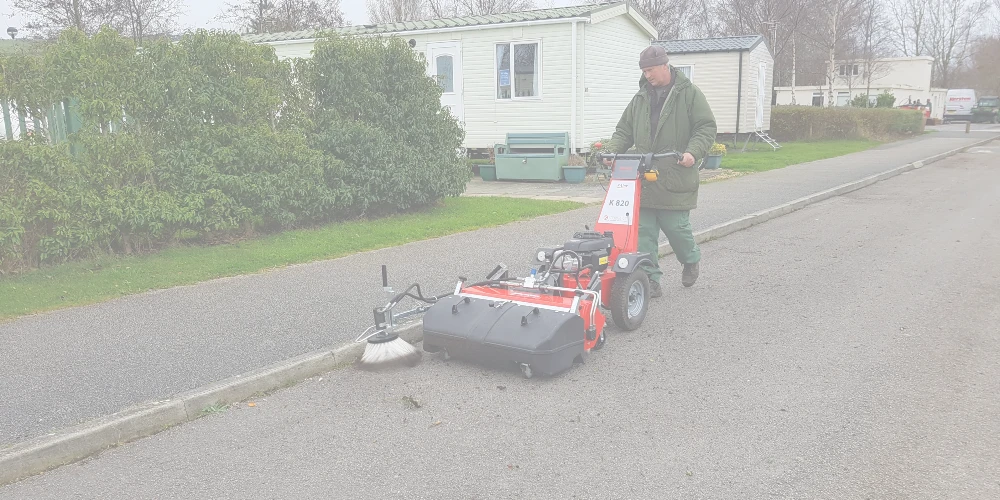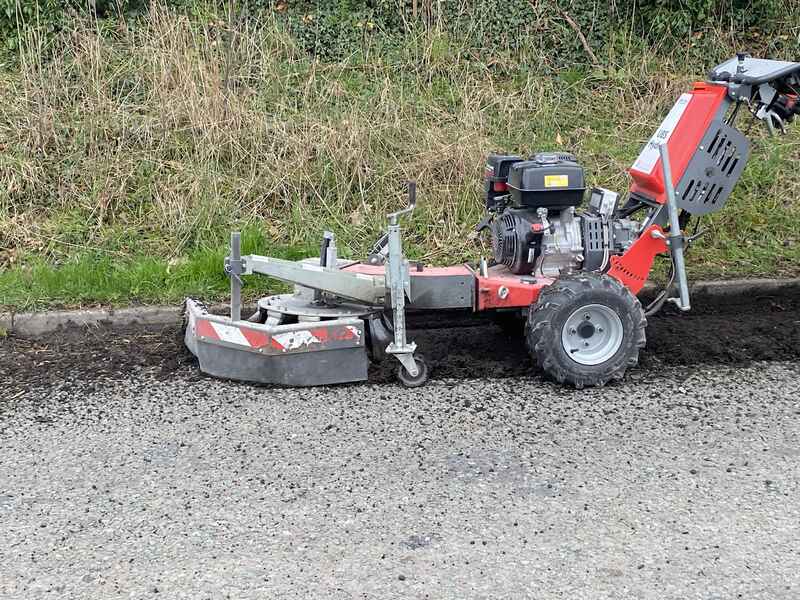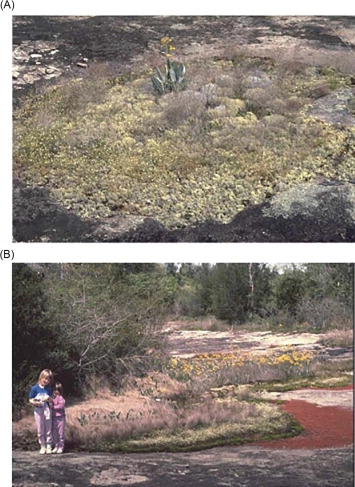Soil and Heavy Debris Management

Soil and Heavy Debris Management
Maintaining Soil and Detritus on Hard Surfaces
Soil and Heavy Debris Management focuses on preventing debris buildup on hard surfaces like asphalt, tarmac, and block paving, including kerb lines, driveways, and roads. Organic debris, such as leaves and branches, can accumulate on these surfaces, and when combined with moisture, promotes moss and weed growth, leading to surface damage. A sweeper clears loose debris, while a weedbrush removes stubborn detritus and weeds, ensuring long-term protection and surface maintenance.
Managing Soil and Heavy Debris on Hard Surfaces
Managing soil and compacted detritus on hard surfaces is essential for maintaining the integrity and safety of pavements, driveways, and roads. Over time, accumulated debris, such as leaves, branches, and organic matter, can decompose and form soil. This not only deteriorates the surface but also creates conditions conducive to moss and weed growth. Moisture combined with decomposed debris accelerates this process, leading to potential hazards and increased maintenance costs. Regular management is crucial to prevent these issues and to preserve the functionality and appearance of hard surfaces.
Effective Management Strategies
To effectively manage soil and heavy debris on hard surfaces, start with a powered sweeper and collector to remove detritus before it decomposes and weeds become established. For edges and kerb lines, use a light weed brush to prevent turf encroachment. Adjust the brush height and angle to ensure thorough cleaning and to prevent unnecessary wear. Additionally, a gully brush can be employed to sweep debris trapped in kerb edges into the path of the main brush for efficient collection.
During colder months, be aware of freeze-thaw cycles, which can cause debris to become compacted and more challenging to remove. Regular sweeping and brushing help mitigate the effects of these cycles, preventing ice formation and maintaining surface quality. By incorporating these practices, you can ensure a cleaner, safer environment and extend the lifespan of your hard surfaces.
Articles about soil management
When deciding between a sweeper and a weed brush for asphalt and tarmac maintenance, consider the specific issues you're facing:
- Sweeper: Ideal for removing loose debris, leaves, and dirt that accumulate on the surface and in gullies. A powered sweeper with a collector box is effective in preventing detritus buildup, which can obstruct drainage and lead to moss and weed growth. It is also useful for cleaning edges and keeping pavements clear. Our pedestrian sweepers also come with a de-moss brush, which helps remove moss and algae that may have started to grow on the surface.
- Weed Brush: Best for tackling established weeds and moss that have penetrated the surface. A weed brush can effectively remove these invasive plants, which can cause surface cracks and deterioration over time. It’s particularly useful in areas where weeds have started to penetrate the tarmac, causing damage.
Recommendation: For comprehensive maintenance, use a combination of both tools. Start with a weed brush to address any existing moss and weeds, then follow up with a sweeper to clear the surface and prevent further issues. This dual approach ensures both removal of vegetation and effective debris management, maintaining the integrity and appearance of your asphalt or tarmac surfaces.
Yes, the Gully Brush is compatible with most sweepers, enhancing their ability to achieve clean, crisp edges along paths. This brush not only maintains a visually appealing site but also excels in reaching the corners of kerbs to remove debris. Effective debris management is crucial for preventing weed growth, making the gully brush an essential tool for maintaining a well-kept, weed-free area.
Explore our range of sweepers to find the compatible gully brush for your needs.
Regularly removing soil and heavy debris is essential for effective grounds maintenance to ensure the longevity and safety of hard surfaces such as asphalt, tarmac, and block paving. Accumulated soil and debris can lead to several issues:
- Surface Degradation: Soil and debris, when left unmanaged, can contribute to surface damage. Organic material decomposes and forms a layer of detritus that can compromise the structural integrity of pavements and roads.
- Weed and Moss Growth: Moisture trapped by debris promotes the growth of weeds and moss. This not only deteriorates the surface but also creates hazards for pedestrians and vehicles. Regular removal prevents these issues from taking hold.
- Drainage Problems: Debris accumulation around drainage edges and kerb lines can block water flow, leading to flooding and further surface damage. Maintaining clear drainage areas is critical for preventing water-related problems.
- Enhanced Safety: Removing debris prevents slippery conditions, reducing the risk of accidents. It ensures that walkways and roadways remain safe for users, especially in high-traffic or frequently used areas.
- Cost Efficiency: Regular maintenance reduces the need for costly repairs by addressing issues before they escalate. It helps keep the surface in good condition, minimizing long-term expenses associated with extensive repairs or replacements.
For effective soil and debris management, tools like sweepers and weed brushes are invaluable. They help efficiently clear and maintain hard surfaces, ensuring a clean, safe, and durable environment.
A weed brush is crucial for effective soil and heavy debris management, particularly in areas where compacted debris and stubborn weeds accumulate. It excels at clearing paths and kerb edges, handling heavy-duty, compacted surfaces with ease. The brush's design allows it to target and remove debris in tight spots, such as along kerb lines and around drainage edges. By using a weed brush, you can ensure thorough cleaning and maintenance, preventing the buildup of soil and debris that could otherwise lead to surface damage and promote weed growth.
Weeds thrive on tarmac and asphalt surfaces when detritus, such as leaves and twigs, accumulates in gullies and along pavement edges. This buildup creates a medium for weeds to grow. Once weeds establish themselves in the debris, their roots can penetrate the surface, leading to cracks and further surface damage. Over time, the cracks widen, causing the surface to crumble and form potholes. Regular use of a gully brush and powered sweeper with a collector box is essential for clearing debris from edges and gullies, preventing detritus from rotting and providing a breeding ground for weeds. This helps maintain the integrity of the surface and prevents costly damage.
To prevent moss and algae growth, ensure regular sweeping to remove organic debris and detritus. Prune nearby trees and hedges to reduce leaf and twig accumulation. Maintain proper drainage by addressing any issues with sand displacement or compaction.
The frequency of using Kersten weed brushes varies based on the level of moss and weed growth. For high-traffic areas or surfaces with significant moss problems, regular use is essential to prevent buildup and maintain a clean surface. To avoid detritus accumulation and potential rot, it's crucial to implement preventative measures. Utilizing a powered sweeper and collector can effectively remove debris and support ongoing maintenance, ensuring optimal performance and longevity of your block paving.
Kersten weed brushes and powered sweepers are essential tools for maintaining block paving surfaces. The Kersten weed brush effectively agitates and lifts moss from between the blocks, preventing moisture retention and surface damage. Complemented by the Kersten sweeper, which efficiently collects debris and redistributes sand into gaps, this combination ensures optimal drainage and surface stability. Together, these tools help maintain the appearance, durability, and safety of your block paving, extending its lifespan and reducing the risk of moss-related issues.
For kerb edges that are heavily compacted with weeds and debris, a weed brush is your best tool. Its strong bristles can effectively break through dense and stubborn material, making it ideal for removing compacted detritus and weeds from tight spots. The weed brush excels in heavy-duty conditions where traditional sweepers might be less effective. Use it to slide out debris from kerb edges and clear buildup, especially in areas with significant compacted soil and detritus.
For general maintenance of kerb edges, employing a sweeper with a gully brush attachment can enhance cleanliness and efficiency. The sweeper will handle loose debris, while the gully brush helps clear material trapped in the edges, ensuring crisp and well-maintained kerb lines. This combination helps create clean, defined edges and keeps your surfaces in good condition. For more details on these tools, check out our weed brush, sweeper, and gully brush product pages.

.jpg)


